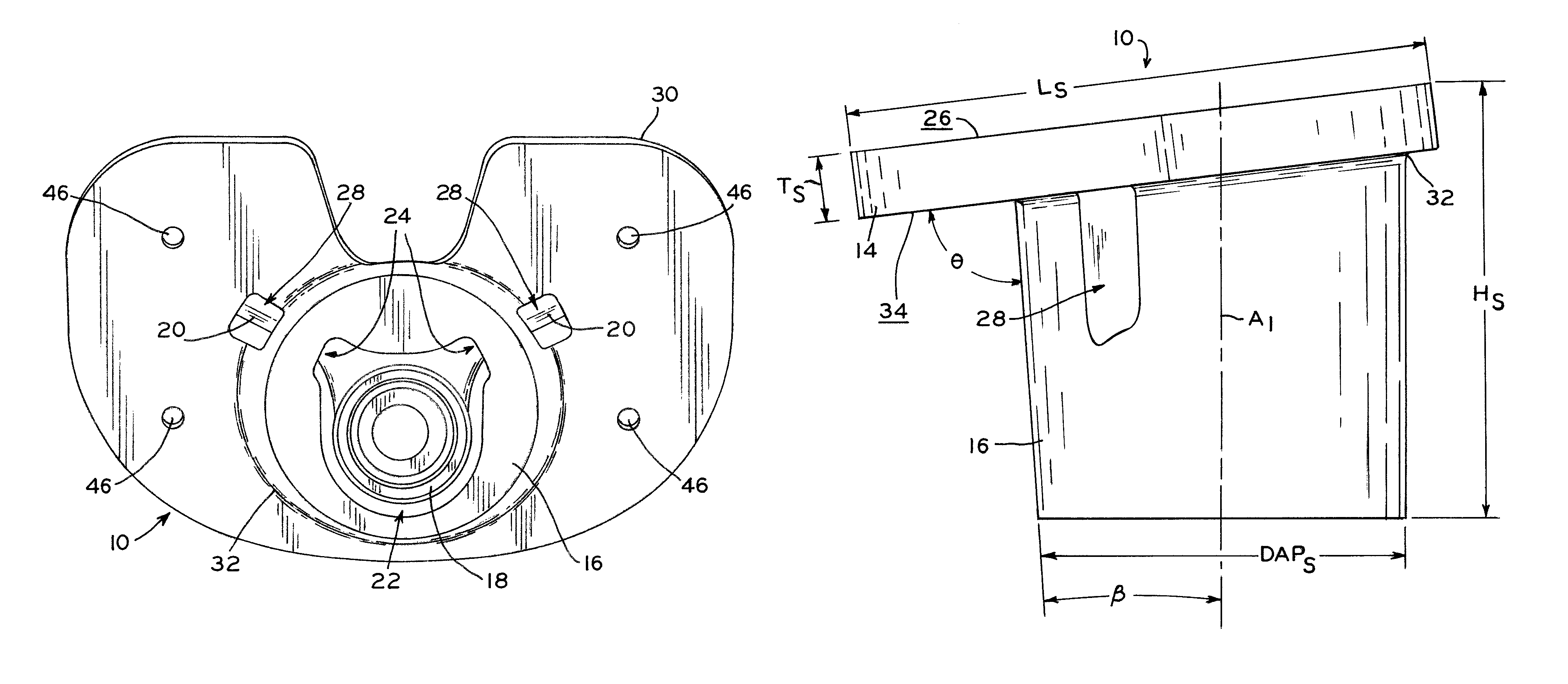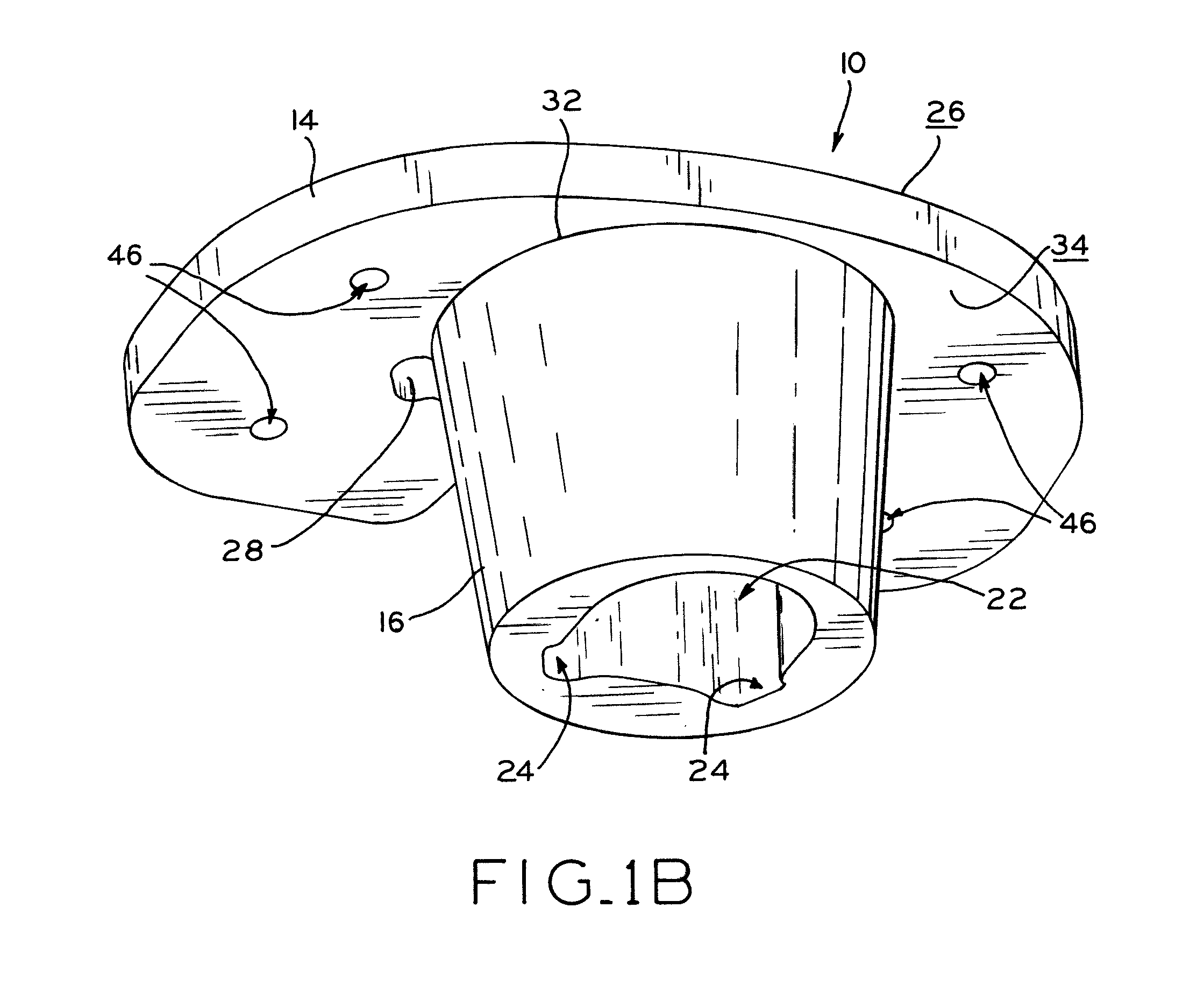Stabilizing prosthesis support structure
a support structure and tibial technology, applied in the field of orthopaedic prostheses, can solve the problems of uninhibited growth of cancellous bone through the porous tantalum structure, severe degeneration of proximal tibia or distal femur, and poor quality bone stock in the diaphyseal, so as to facilitate multi-directional stabilization, facilitate multi-directional stabilization, and minimize or eliminate subsidence.
- Summary
- Abstract
- Description
- Claims
- Application Information
AI Technical Summary
Benefits of technology
Problems solved by technology
Method used
Image
Examples
Embodiment Construction
[0072]The present disclosure provides a monolithic implant support structure which provides a stable implant mounting surface in a severely damaged or diseased bone. In the exemplary embodiments discussed below, the support structure provides a foundation for supporting a tibial baseplate that is resistant to subsidence while also facilitating replacement and / or augmentation of metaphyseal or diaphyseal bone within the tibia. The support structure may be made of a porous bone ingrowth material that provides a scaffold for bone ingrowth on multiple surfaces. These surfaces present large, three-dimensional areas of bone ingrowth material to the surrounding healthy bone for secure and stable long term fixation of the support structure to the proximal tibia. A tibial baseplate may be mechanically attached to the support structure, which facilitates later removal of the tibial baseplate during a revision surgery while preserving the prosthesis foundation provided by the support structure...
PUM
 Login to View More
Login to View More Abstract
Description
Claims
Application Information
 Login to View More
Login to View More - R&D
- Intellectual Property
- Life Sciences
- Materials
- Tech Scout
- Unparalleled Data Quality
- Higher Quality Content
- 60% Fewer Hallucinations
Browse by: Latest US Patents, China's latest patents, Technical Efficacy Thesaurus, Application Domain, Technology Topic, Popular Technical Reports.
© 2025 PatSnap. All rights reserved.Legal|Privacy policy|Modern Slavery Act Transparency Statement|Sitemap|About US| Contact US: help@patsnap.com



